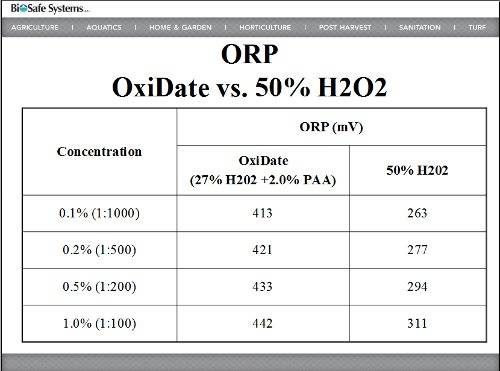We recently spoke with a customer who’s been using one of our chemistries effectively for a while now to suppress disease in his hydroponic operation. He was considering trying to save costs by using Hydrogen Peroxide to treat his particular disease. We though it was time for a chat with Dr. Choppakatla our pathologist, who could give me the goods on how BioSafe chemistries compare to straight Hydrogen Peroxide. His response:
Peroxygens like OxiDate are more powerful than Hydrogen Peroxide. They have more oxidation potential and are very stable in high organic environments. Peroxygens release more hydroxyl radicals than the hydrogen peroxide and hydroxyl radicals have the highest oxidation potential next only to fluorine.
The chart below compares peroxygens such as OxiDate vs. straight hydrogen peroxide in terms of their OxiDation Reduction Potential (ORP). ORP is the measurement of the strength of the sanitizer. As one can see, OxiDate has higher ORP at any given concentration compared to straight peroxide.

Another study compared hydrogen peroxide to ZeroTol and concluded that ZeroTol is about 10 times more powerful than the hydrogen peroxide in it’s disinfection capabilities as a surface application.

